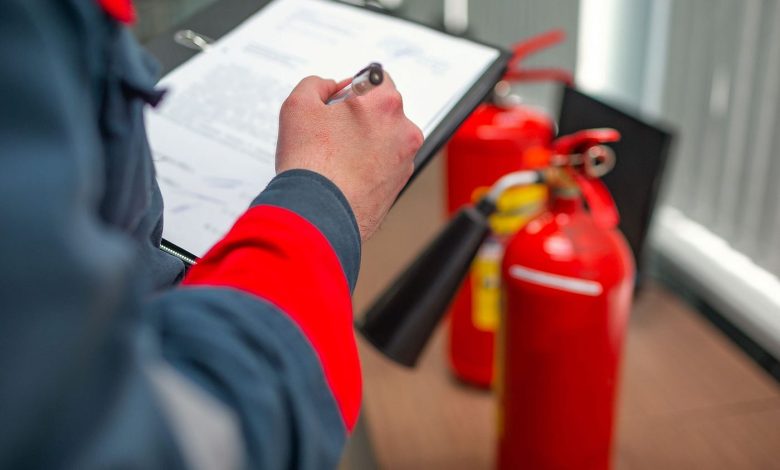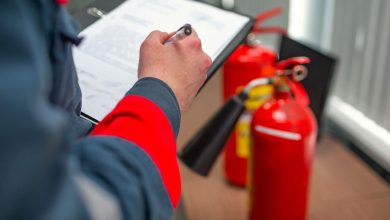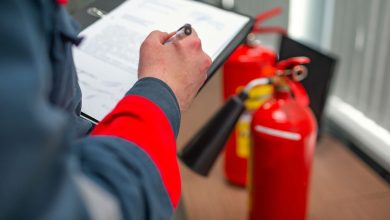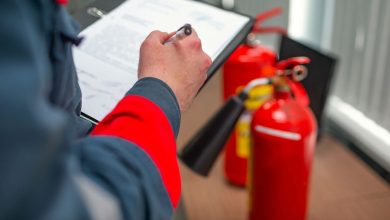The Role of Fire and Safety Training in the Construction Industry
Fire and Safety Training

Construction sites are dynamic, high-risk environments where heavy machinery, electrical tools, flammable materials, and ever-changing structures coexist. Because of these risks, fire and safety training becomes essential. It empowers workers to respond quickly and appropriately, significantly reducing the chance of injury or loss.
At Sri Triveni Crafts, we specialize in providing customized fire safety audits and training programs tailored for the construction sector. Our goal is to help companies build not just safely—but smartly.
Why Fire and Safety Training Matters in Construction
High-Risk Work Environments
To begin with, construction sites often involve activities like welding, cutting, and electrical work, which increase fire hazards. When workers are unaware of the risks or how to respond, minor issues can escalate rapidly. Therefore, fire safety training ensures they know how to act in time.
Constant Workforce Changes
In addition, the construction industry regularly sees new and temporary laborers joining sites. Since many of them are unfamiliar with site-specific safety protocols, training becomes a continuous requirement rather than a one-time activity.
Legal Framework Governing Safety in Construction
Building and Other Construction Workers Act, 1996 (BOCW)
According to this act, employers must ensure worker safety by implementing fire prevention measures. They must also provide adequate training to help workers identify hazards and react to emergencies.
National Building Code of India (NBC)
The NBC outlines fire safety standards for buildings under construction. It advises using fire-resistant materials, maintaining clear escape routes, and conducting evacuation drills regularly.
Local Authority Regulations
Furthermore, municipal and state fire departments frequently inspect construction sites. Non-compliance with fire safety guidelines can result in penalties, halted projects, or even revocation of permits.
Essential Elements of a Site Safety Program
Onboarding and Orientation
Every new worker should begin with a fire safety orientation. This session should cover:
-
Site-specific hazards
-
Emergency contacts and reporting
-
Evacuation routes and procedures
Such an approach ensures everyone on-site understands their role in maintaining safety.
Fire-Resistant Materials and Equipment
Using fire-retardant scaffolding, temporary structures, and protective covers significantly lowers fire risks. Employers should also ensure proper storage of combustible materials and routine inspections of electrical systems.
Clear Communication Channels
Reliable communication tools are crucial in emergencies. Two-way radios, loudspeakers, and emergency contact lists must be accessible at all times.
Why Fire Safety Audits Are Crucial
At Sri Triveni Crafts, we perform comprehensive fire safety audits designed specifically for construction environments. These audits evaluate:
-
Accessibility of fire exits
-
Functionality of fire extinguishers and alarms
-
Proper storage of flammable items
-
Adequacy of staff training
After conducting the audit, we offer actionable recommendations to help companies close safety gaps and meet legal standards.
Effective Fire and Safety Training Methods
Fire Drills and Practice Evacuations
Regular fire drills prepare workers to respond efficiently under pressure. These drills simulate real scenarios, enabling teams to identify and fix weaknesses in their response plans.
Daily Toolbox Talks
Moreover, short morning briefings help reinforce daily safety reminders. These talks can address recent near-misses, changes in site layout, or updates to safety protocols.
First Responder Training
In addition, training select workers as emergency responders ensures that help is available even before emergency services arrive. These individuals can handle minor fires, assist injured workers, and guide evacuations.
Benefits of Fire and Safety Training
Reduces Accidents and Project Delays
Well-trained teams can prevent fires before they start or control them early, avoiding equipment damage and project downtime.
Boosts Worker Confidence
When workers feel prepared, they perform better. Fire safety training empowers them to make quick decisions during emergencies, which fosters a culture of safety.
Enhances Reputation and Compliance
Contractors who prioritize safety stand out in a competitive industry. Meeting or exceeding legal requirements also improves relationships with clients, insurers, and regulators.
Conclusion
The construction industry operates in environments where hazards are unavoidable. However, by implementing fire and safety training, companies can transform risk into readiness. Not only does this protect lives and property, but it also strengthens project efficiency and legal compliance. At Sri Triveni Crafts, we’re proud to support construction firms in creating safer job sites through expert audits and hands-on training.
Frequently Asked Questions (FAQs)
1. Is fire and safety training mandatory on all construction sites?
Yes. It is required by Indian safety laws, including the BOCW Act and NBC guidelines, to protect workers and ensure safe practices.
2. How often should fire drills be held on a construction site?
Ideally, fire drills should be conducted at least once every quarter or when there are major site changes.
3. What are the most common fire hazards in construction?
Welding sparks, exposed electrical wires, flammable liquids, and improper storage are leading causes of fire incidents.
4. Are short-term workers also required to receive training?
Absolutely. Every person working on-site, no matter how briefly, must be trained in basic fire safety.
5. How does Sri Triveni Crafts assist with fire safety on construction sites?
We offer customized fire safety audits and on-site training programs to help construction firms comply with legal standards and keep their teams safe.


